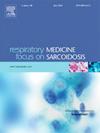Ventilator-associated pneumonia: mechanisms, an appraisal of current therapies and the role for inhaled antibiotics in prevention and treatment
IF 3.1
3区 医学
Q2 CARDIAC & CARDIOVASCULAR SYSTEMS
引用次数: 0
Abstract
Ventilator-associated pneumonia (VAP) is the most prevalent nosocomial infection in the intensive care unit (ICU), accounting for more than 30 % of the overall costs for all healthcare-associated infections. VAP leads to poor outcomes, such as increased duration of mechanical ventilation, prolonged length of ICU stay and increased mortality rates for up to five years after discharge. The pathophysiology of VAP is complex, attributable to the colonisation of abnormal microbiota and micro-aspiration risks associated with mechanical ventilation and critical illness, and thus its prevention and treatment is complex. With the rising prevalence of multidrug resistance infections and antibiotic prescription pressures, the management of VAP is becoming increasingly challenging. The traditional treatment of VAP with intravenous or oral antibiotics is effective; yet inhaled antibiotics may offer a targeted, synergistic and effective alternative. Empirical therapy with broad-spectrum antibiotics are associated with systemic complications and increased pathogenic strains, whilst inhaled antibiotics reduce bystander antimicrobial resistance with fewer systemic side effects. However, large-scale clinical trials have failed to cosnsitently demonstrate the clinical benefits of inhaled antibiotics and thus translation into practice remains controversial. In this review, we summarise the pathophysiology and diagnosis of VAP, underpin the mechanisms of currently available therapies and discuss the potential role of inhaled antibiotics for the prevention and treatment of VAP, with critical discussion of the available evidence.
呼吸机相关性肺炎:机制,目前治疗方法的评价和吸入抗生素在预防和治疗中的作用
呼吸机相关性肺炎(VAP)是重症监护病房(ICU)中最常见的医院感染,占所有卫生保健相关感染总费用的30%以上。VAP导致预后不良,如机械通气持续时间增加,ICU住院时间延长,出院后长达5年的死亡率增加。VAP的病理生理复杂,异常菌群定植、机械通气和危重疾病相关的微吸入风险,因此其预防和治疗是复杂的。随着多药耐药感染的流行和抗生素处方压力的增加,VAP的管理变得越来越具有挑战性。传统的静脉或口服抗生素治疗VAP是有效的;然而,吸入抗生素可能提供一种有针对性的、协同的、有效的替代方案。广谱抗生素的经验性治疗与全身并发症和致病性菌株增加有关,而吸入抗生素可减少旁观者的抗菌素耐药性,并减少全身副作用。然而,大规模临床试验未能一致证明吸入抗生素的临床益处,因此转化为实践仍然存在争议。在这篇综述中,我们总结了VAP的病理生理和诊断,巩固了目前可用的治疗机制,并讨论了吸入抗生素在预防和治疗VAP中的潜在作用,并对现有证据进行了批判性的讨论。
本文章由计算机程序翻译,如有差异,请以英文原文为准。
求助全文
约1分钟内获得全文
求助全文
来源期刊

Respiratory medicine
医学-呼吸系统
CiteScore
7.50
自引率
0.00%
发文量
199
审稿时长
38 days
期刊介绍:
Respiratory Medicine is an internationally-renowned journal devoted to the rapid publication of clinically-relevant respiratory medicine research. It combines cutting-edge original research with state-of-the-art reviews dealing with all aspects of respiratory diseases and therapeutic interventions. Topics include adult and paediatric medicine, epidemiology, immunology and cell biology, physiology, occupational disorders, and the role of allergens and pollutants.
Respiratory Medicine is increasingly the journal of choice for publication of phased trial work, commenting on effectiveness, dosage and methods of action.
 求助内容:
求助内容: 应助结果提醒方式:
应助结果提醒方式:


